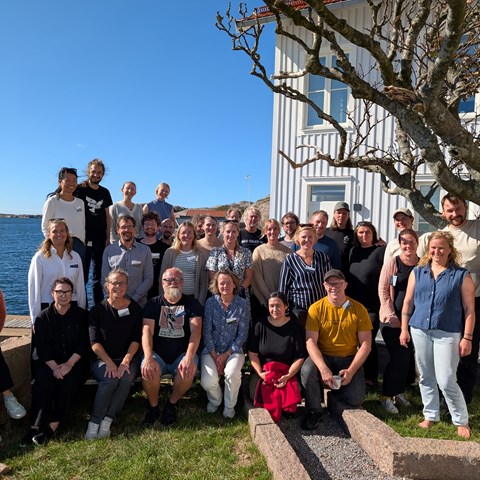Strong engagement and new ideas at SLU Aqua’s environmental monitoring and assessment workshop in Lysekil

Hello Erika Norlinder and Kristin Öhman. You helped organize an environmental monitoring and assessment workshop on the theme of image and video analysis in Lysekil in September.
Tell us more about the workshop?
The purpose was to gather information on ongoing work within image and video analysis across SLU Aqua, highlight our expertise and discuss both opportunities and challenges – from data storage and field methods to new technologies such as AI and machine learning.
Participants also presented their projects using “mini-posters”, and we heard several exciting talks, including on camera mounting and data quality (Filip Bohlin), a presentation of the software SmartDots which enables calibration and quality assurance in, for example, otolith age reading (Annelie Hilvarsson), the challenges of filming crayfish in Lake Vättern (Patrik Bohman), and how a data flow can look from field collection to quality-assured data (Erika Norlinder). We also had inspiring presentations on developments in AI, experimental design and strategic thinking at the department level from Jonas Hentati Sundberg and Peter Ljungberg.
In short, these were engaging days with lots of knowledge exchange, new insights and a sense that we can move SLU Aqua forward together in the field of image and video analysis.
Did you get ideas for new collaborations or projects during the workshop?
During the workshop, we created a platform to share ongoing projects and identify new collaborations in image and video analysis. It became clear that we have many different research questions and several shared challenges – such as data storage, smarter use of AI and the need for better collaboration to avoid duplicate work. Some projects already connected, and we see great potential in developing common routines at the institutional level.
What was the most valuable takeaway from the workshop?
The workshop really highlighted the value of meeting in person – it builds engagement, new connections and room for ideas to grow. It was especially valuable to gain an overview of the entire process, from planning to analysis and storage of image and video material. Every step is important, and we have strong expertise throughout the whole chain.
What future opportunities do you see for using image and video analysis in environmental monitoring and assessment?
Image and video analysis is an area that will only continue to grow. More and more projects are using the technology – and this increases the need for a smart and sustainable infrastructure for storing videos, images and data at SLU Aqua.
Will you continue with this type of workshop?
We hope to continue organising these kinds of meetings and workshops – there seems to be great interest! Around 50 people attended this workshop, despite many being in the middle of an intensive field season.
What was the impression from other participants?
We received very positive feedback on the workshop. The format worked well and sparked exciting discussions. It was especially appreciated that both Head of Department Sara Bergek and Dean Noél Holmgren attended – a clear sign that image and video analysis is a priority at both SLU Aqua and faculty level. It also created a valuable opportunity for direct dialogue between participants and management.
Anything else you’d like to add?
We wanted to reach as many staff members as possible with a focus on environmental analysis and assessment – and we succeeded. The participants had different areas of expertise, and it became clear how research and environmental monitoring and assessment are interconnected. Now it’s about finding smart ways forward, avoiding duplicate work and gathering all knowledge and experience within SLU Aqua.
Here you can find presentations and mini-posters from the workshop.
The workshop was partly funded by the Environmental Monitoring and Assessment Coordination Group (SAMSAS)




